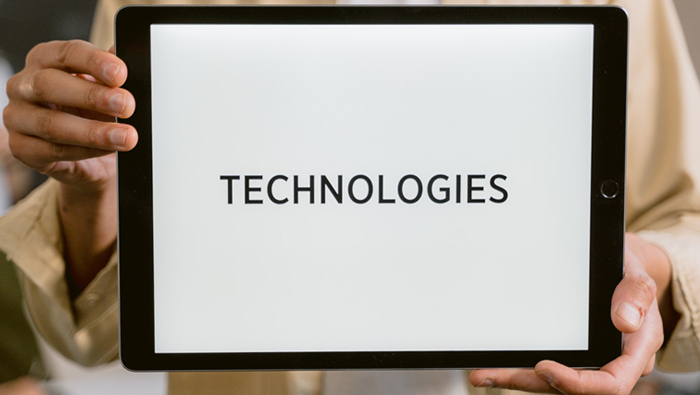
Find out more

Read the article

Find out more

Read the article

Find out more
The stubborn technology concept was introduced by Donna Drucker, a historian of technology and medicine. One of the characteristics of such a technology is that it continues to be used regardless of the fact that better and more effective or efficient solutions are available on the market. In this article, the stubborn technology idea is used to describe two solutions that are not so much stubbornly applied by their users but rather ‘invented’ every now and then as new and ground-breaking proposals for people with disabilities and deaf people.
When in 2016 Toyota engineers introduced iBot, a wheelchair that could climb stairs, it seemed that modern technology was opening a new chapter for people with mobility impairments. The equipment was advertised as offering people with disabilities freedom in urban space and allowing them to move around independently of architectural restrictions or the goodwill of their companions or passers-by ready to carry the user to a train platform or an inaccessible building.
Similar enthusiasm and emotions can be observed when it is reported, on a regular basis, that there is software which, in combination with an electronic glove, can translate a sign language into a verbal language for the hearing interlocutor.
Both cases seem to be the latest developments in engineering and computing. They are highly advanced solutions that support people with disabilities in an unprecedented way. Nothing could be further from the truth. The prototype of the stair-climbing wheelchair was introduced more than half a century ago by the British inventor Meredith Thring, while the translating electronic glove was developed in the cybernetic laboratory of the Massachusetts Institute of Technology in the late 1940s.
Why, decades after the first prototypes of these instruments, do they persistently return and are promoted as innovation? Perhaps the answer may lie in the failure to recognise and consider the needs of target users as they were excluded from the design of such devices at the idea development stage. These ideas, however interesting, are not accepted, fall into oblivion and some time later they are ‘invented’ again.

Ideas for stair-climbing wheelchairs or sign-language interpreting gloves may sometimes be welcomed with interest by people with disabilities. For some of them, they may indeed be an attractive proposition but disability activists and researchers are often critical about them.
When writing about a vibrating costume with an aim to allow deaf users to feel music through vibrations on the body, Alexandra Dean Grossi, an activist who promotes inclusive design, described similar solutions as ‘nonsensical, exclusionary and offensive’. Grossi stressed that they were an expression of the ableism of designers who assumed that deaf people or people with disabilities should want to experience, move or communicate in a way that was accepted as ‘normal’ by the able-bodied majority.
Critics of the solutions presented are concerned about the individualisation of disability inscribed in them as a ‘problem’ of a particular body which can be eliminated thanks to an individual diagnosis and a technical solution. Meanwhile, the social model of disability exposes not so much its medical and individual component but the dynamic and social dimension of disability which results from the limitations of the environment. Here, in a space where there are ramps and lifts, moving around in a wheelchair is not exclusionary. Solutions such as, for example, stair climbing wheelchairs transfer the responsibility for accessibility from society to people with disabilities. They would also be (and often are) the ones burdened with the multiple costs of such inventions as advanced and over-complicated assistive technologies are mostly beyond reach for individuals who often experience economic exclusion and poverty. Reimbursement means they become entangled in a web of surveillance and control exercised by funding institutions. These devices require an investment of time and energy to master their use and the involvement of assistants - despite the independence often advertised in the promotional discourse. Moreover, many of them require regular charging, servicing and maintenance.
People with disabilities have unique expertise, competencies and experience as a result of living with a disability. This is the potential that able-bodied inventors lack. Their non-disabled bodies and minds weigh them down and shape their presumptions as to what a user with a disability might need. They strive for technologies that normalise the experience of a person with a disability so that they can move and communicate like the majority of society. Meanwhile, as American deafblind activist Haben Girma says: ‘Disability is an opportunity for innovation. If you can’t do something in a known way, you have to invent another way to do it. People with disabilities have been doing this forever – these are the hidden stories that people don’t know’.
‘Kultura współczesna’, tom Niepełnosprawność i technologia, 2018, numer 3.
Telefon, kino i cyborgi. Wzajemne relacje niesłyszenia i techniki, Magdalena Zdrodowska, Wydawnictwo Uniwersytetu Jagiellońskiego 2021.
Magdalena Zdrodowska – assistant professor at the Institute of Audiovisual Arts of the Jagiellonian University and co-author of the book 'Telefon, kino i cyborgi. Wzajemne relacje niesłyszenia i techniki' (2021). She has co-founded an international research platform devoted to disability studies in Central and Eastern Europe. Currently, she is involved in the research project ‘Deaf history of cinema’
I like
people liked this article